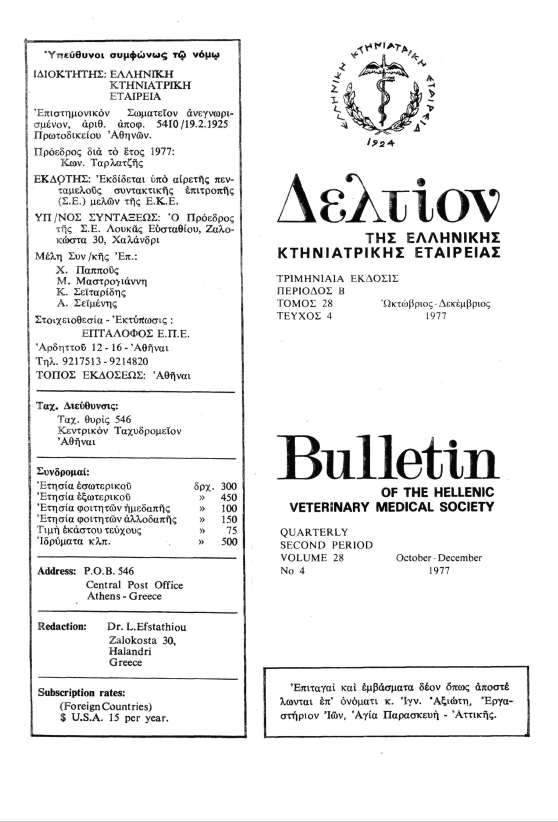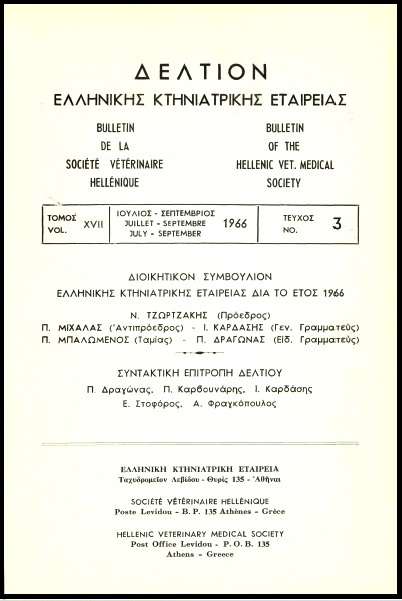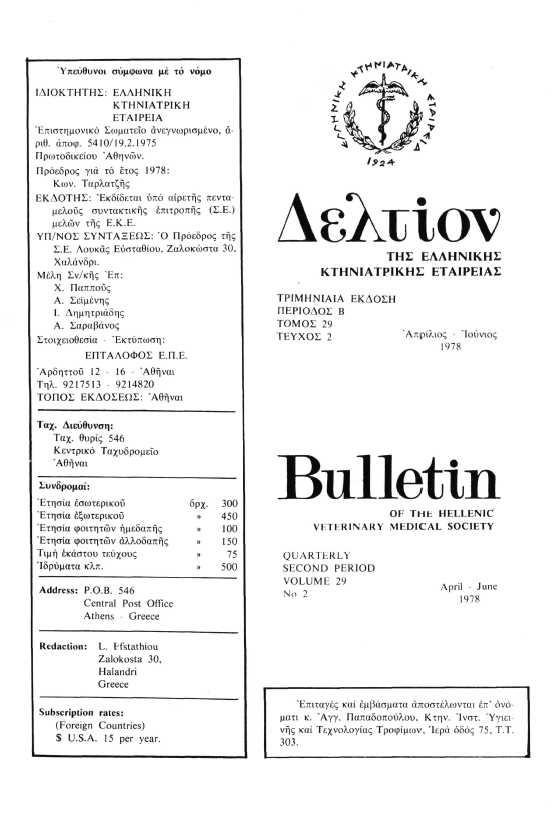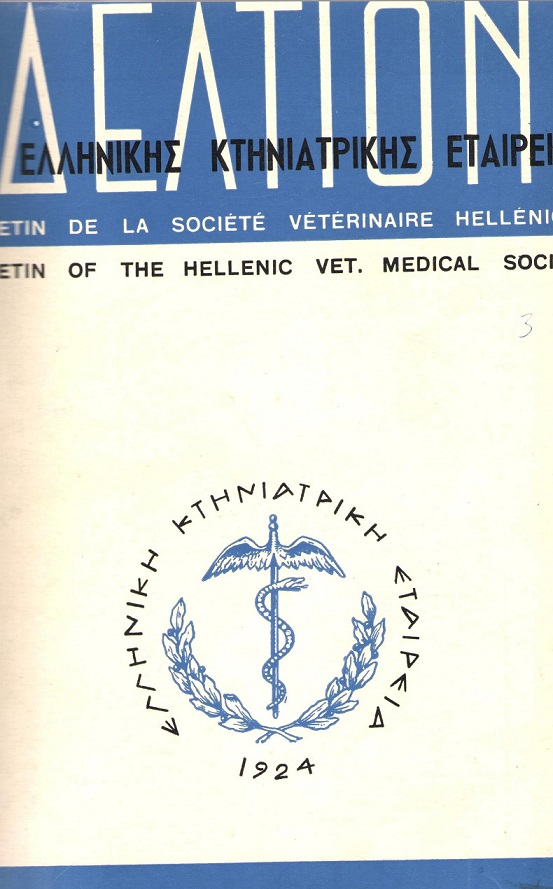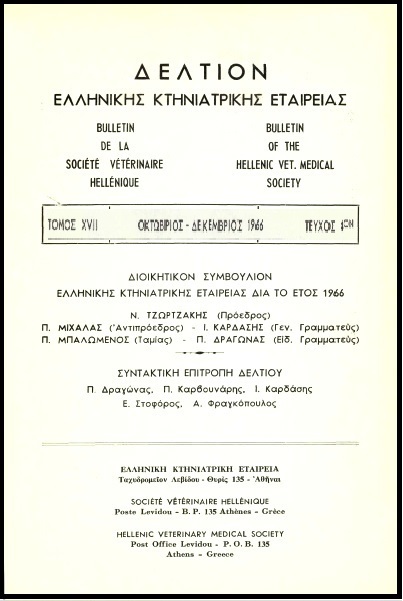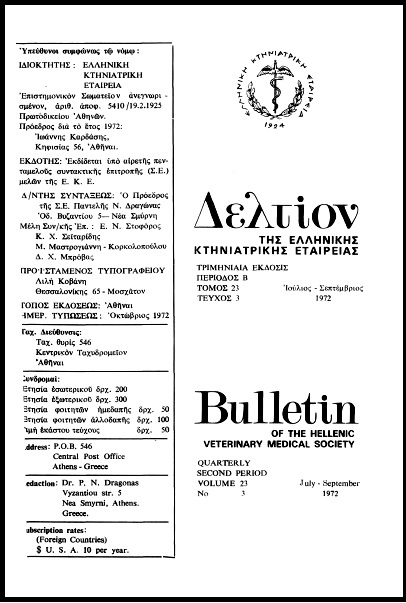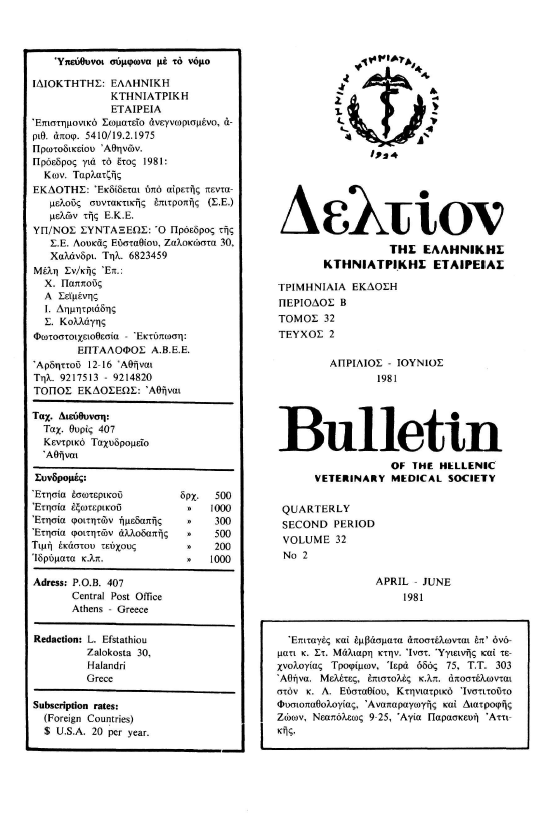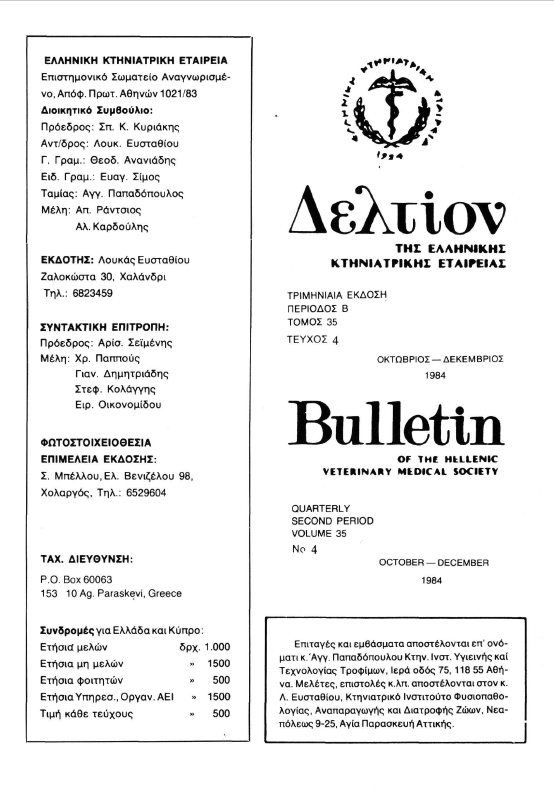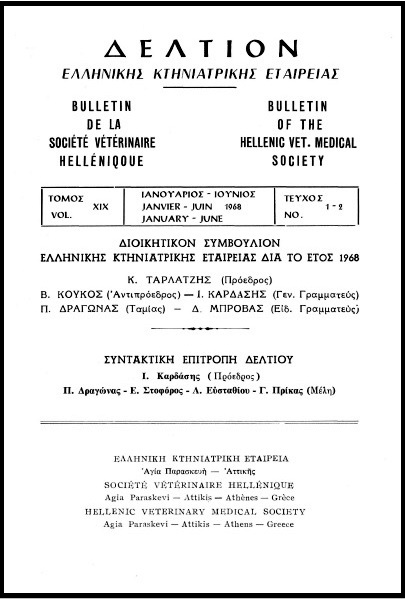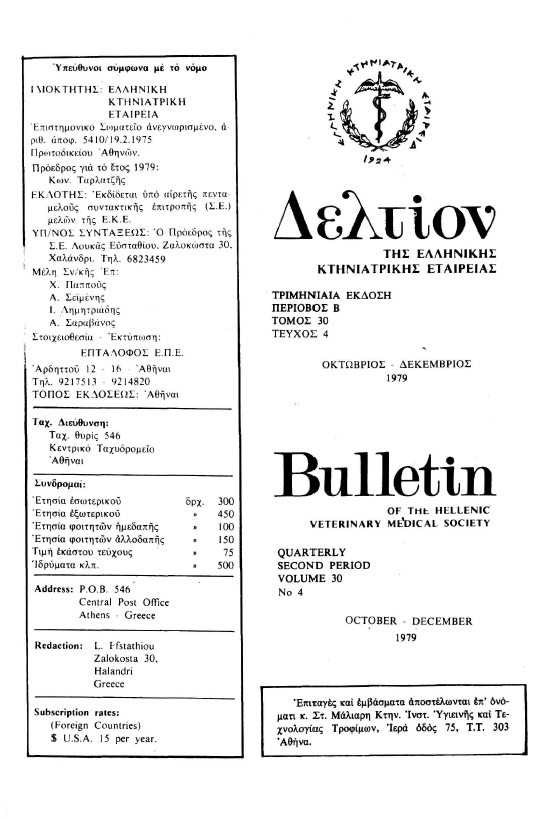Olive Cake in Calves Alimentation
Abstract
1. The annual production of ordinary olive cake in Greece is about 300-400.000 tons and after its treatment in olive-Kernel factories 200.000 tons of exausted olive cake are obtained. 2. The chemical compositions of these products in referred in table I for the ordinary olive cake and table II for the exausted one with or without wooden pieces. 3. The administration to calves of exausted cake in a high percentage of 40-50% in mixtures with addition of molasses and carod bean pulp (20%), urea to 1% and other equilibrating substances gave satisfactory results. 554 calves of different origin, with an initial age of 5-8 months and an initial of 132+ 21 kg. after receiving the above mixture for 350+30 days at libertum they reached 421+41 kg. 4. No other crude food was given this mixture. The daily increase of the live weight was 825 g and there were not health problems. 5. Experiments are going on to improve the nutritive value of olive cake by adding caustic soda, standardizing it in pellets and observing the influence on yield and health of animals.
Article Details
- How to Cite
-
ΕΥΣΤΑΘΙΟΥ Λ., ΠΑΠΑΔΟΠΟΥΛΟΣ Π., & ΜΙΧΕΛΙΔΑΚΗΣ Ι. (2019). Olive Cake in Calves Alimentation. Journal of the Hellenic Veterinary Medical Society, 28(4), 195–208. https://doi.org/10.12681/jhvms.21315
- Issue
- Vol. 28 No. 4 (1977)
- Section
- Articles

This work is licensed under a Creative Commons Attribution-NonCommercial 4.0 International License.
Authors who publish with this journal agree to the following terms:
· Authors retain copyright and grant the journal right of first publication with the work simultaneously licensed under a Creative Commons Attribution Non-Commercial License that allows others to share the work with an acknowledgement of the work's authorship and initial publication in this journal.
· Authors are able to enter into separate, additional contractual arrangements for the non-exclusive distribution of the journal's published version of the work (e.g. post it to an institutional repository or publish it in a book), with an acknowledgement of its initial publication in this journal.
· Authors are permitted and encouraged to post their work online (preferably in institutional repositories or on their website) prior to and during the submission process, as it can lead to productive exchanges, as well as earlier and greater citation of published work.

